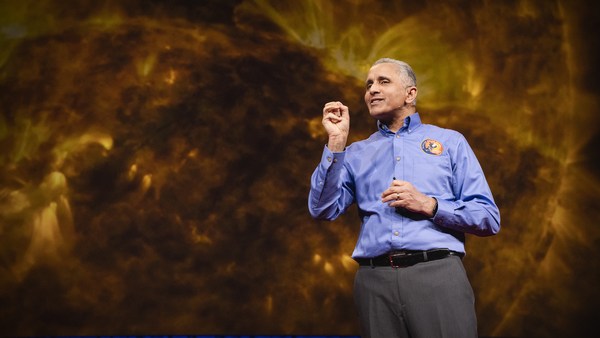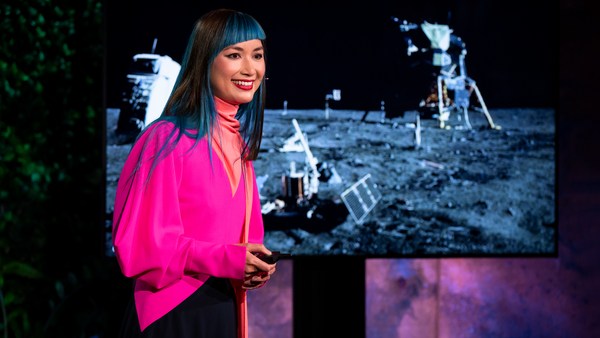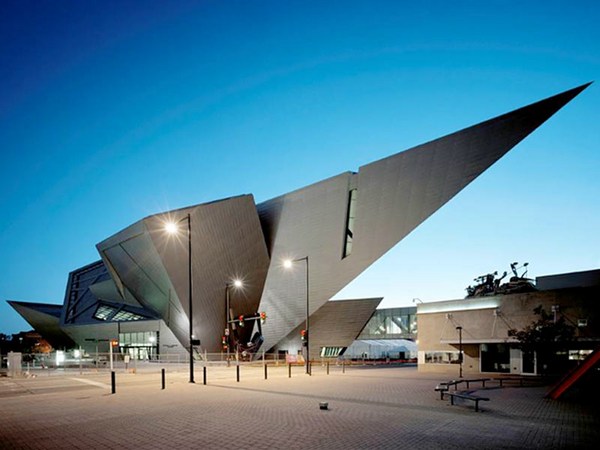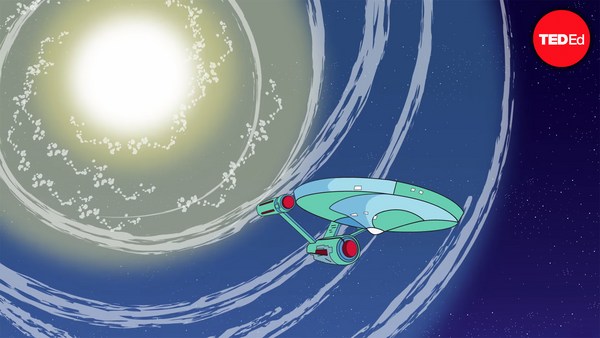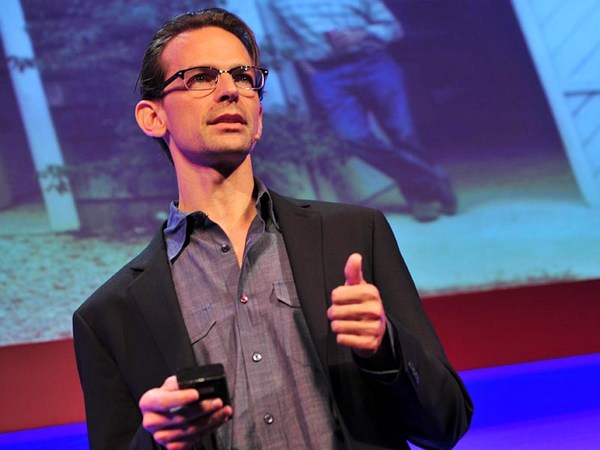I once had a professor ask me, "Why in the world do we spend so much money on space exploration in the face of so many pressing challenges here on Earth?"
It's a good question and a tough one for me. Should we be building a future life in space? I want to argue yes, and tell you how.
I do believe in the beauty of space exploration for the sake of new knowledge, because the little that we do know about our universe pales in comparison to what we do not yet know. And in some ways, it's in my blood.
My parents are both pilots. My dad was an A-10 fighter pilot, and my mom was one of the first women to ever fly for the United States Air Force. And 14 years ago, I floated in microgravity like an astronaut for the first time. This inspired me to work in aerospace for the rest of my life.
But space exploration does so much more than just inspire. Our space program has routinely delivered breakthrough innovations. The Apollo program gave us the foundation of modern computing. The International Space Station gave us LASIK eye surgery, contributed to that amazing technology. And now new technologies are coming online to enable life-saving biotech in orbit and even deliver energy from space.
What makes all of this possible? In the last 15 years, the cost to get to space has dropped dramatically, from over 50,000 dollars a kilogram in the NASA Shuttle era, to now under 200 dollars a kilogram with SpaceX's Starship coming online. This is remarkable. This is like FedEx. If you can ship something around the world, you can ship it to space.
But the precursor space station where so much of this amazing work has been taking place, the International Space Station, it's getting old, it's very cramped, and worse, it's about to be shut down. It's going to be decommissioned in 2030, 2031. We need new infrastructure and we need it fast.
Unfortunately, current in-space construction is quite slow, difficult and dangerous. This is a diagram of all of the pieces of the International Space Station. And they were assembled over 15 years like this. By astronauts doing incredibly courageous and risky maneuvers in bulky spacesuits, basically building some of the most advanced technology known to humankind by hand. This hand-built method doesn't scale.
Even if the cost to go to space dropped even more dramatically tomorrow, we only have room for about 14 humans in orbit, period. The bottleneck isn't rockets anymore. It's real estate. And we need a new solution for how to build in orbit and scale up space infrastructure for the public good.
Nine years ago, I started working on this problem. Could we learn from nature, from plants and proteins that self-assemble at a small scale and adapt this to the grandest scales in space?
We know that when you're in free fall around a planet, you have the sensation of zero gravity. In that environment, forces like magnetism can bring together vast objects with ease. So first at MIT and now at Aurelia Institute, my team and I have invented a system to do just this, to grow space structures in orbit using autonomous robotic self-assembly.
The idea behind the method is to allow us to build reconfigurable space stations that are bigger than our biggest rockets. Based on my MIT PhD, we use electropermanent magnets, very special strong magnets, that bring the modular tiles together to dock, to rendezvous. Essentially, think about space Legos with magnets that click, click, click, click into place.
Tesserae, what we call this space habitat, is a self-assembling structure. So we ship the modular parts to their destination, wherever they're meant to be, and once the tiles or the modules arrive, they build themselves. So we don't require astronauts or even robotic arms to go out and do slow or risky spacewalks and space maneuvers.
Here you can see that the tiles were packed flat for their ride to orbit, very efficiently. We like to joke on the team this is like a glorified Pez dispenser, if you guys remember the candies from the '90s, and from there, after the tiles have come together to form one buckyball, multiple buckyballs can dock to form a larger space station. And the best part is that we have tested this in space twice.
(Applause)
So here you can see Michael López-Alegría on orbit inside the International Space Station, helping us test the code and the timing and the pacing for dynamic robotic self-assembly in orbit. From here we build and fly and test, we iteratively prototype, we simulate the physics to be able to fine-tune the construction method.
And last year we built a human-scale mockup of our space habitat. And we brought it on a roadshow across the country. What we hope to communicate to the public with these interiors is a life worth living in space, or at least worth commuting to.
Once we're in space, we can use the really unique environment of the vacuum of microgravity to manufacture things that can't be made on Earth In low-Earth orbit, we're working with partners to use the Tesserae construction technology to assemble large-volume, high throughput biotech factories. It turns out that in microgravity protein crystals grow differently, certain types of tissues grow faster or mature better, and we can even do novel drug discovery in a way that we can't do under the conditions of Earth gravity. We know that certain key biological samples behave differently in space, particularly when they're floating. So whether it's exceptional quality organoids for testing Alzheimer's drugs or cancer drugs or artificial retinas that would cure macular degeneration, these therapies will be made in space, stabilized and brought back down to Earth.
A little bit further out between Earth and the Sun we're working to see if we can help start-up energy companies self-assemble thousands of solar panels in orbit above the atmosphere. Now, what this would allow us to do is capture raw, unfiltered sunlight and beam it anywhere on Earth, even at night. This is like a flashlight from space, and it would fundamentally solve the storage problem for solar power, allowing us to deliver abundant green energy to the surface of the Earth.
(Applause)
These are some of the most responsible ways that we could use space technology in service of Earth. My team and I have been working on an idea passionately, known for decades in science fiction as offworlding. Not offworlding the humans, but offworlding the heavy industry. We could let Earth recover as a garden planet for generations to come, and use space infrastructure to do that offworlding.
And this future is a lot closer than you may think. While space travel definitely feels rarefied, and in many ways it certainly still is, I bring dozens of people with me every year into microgravity on parabolic flights. This is how NASA trains astronauts, affectionately known as the Vomit Comet. It's more fun than it sounds. And this is how we are training the new space generation.
We're building architecture to welcome more people to orbit, whether it's for a long weekend to see the planet from space for the first time, or maybe for a career scientist to commute for a decade to work on a major breakthrough. Rockets like Starship enable us to dream really big, to be able to get enough mass of Tesserae tiles and enough people into orbit to be able to fundamentally scale up space infrastructure for the public good.
We know that the business case for space is here. Governments are investing in space-based solar power, companies are investing in zero-G biotech and in the next 10 years, we believe that we will be able to deploy our first modularly self-assembling space habitat and contribute to a trillion- dollar space economy.
And one of the best things we could do with this infrastructure is harness it for the profound benefit of life on Earth. Because fundamentally, space exploration isn't about escaping Earth.
In 1968, Bill Anders took this iconic photograph, now lovingly referred to as Earthrise, and he famously remarked, “We came all this way to explore the Moon and the most important thing is we discovered the Earth.” Bill's comment reminds us that space exploration is about building an aspirational future for humanity wherever we are: on Earth, in orbit around Earth or beyond.
Access to space is cheap enough now and available enough, we need to update our conception of the possible. If we invest now in space infrastructure if we invest now in space architecture, new paradigms for how we can build infrastructure in space, we can profoundly expand humanity's horizons while still protecting the heritage of our priceless planet. We don't have to pick one or the other.
Someday we will live on Mars. Someday we will travel outside of the confines of our solar system. But until then, let's put space to work for Earth.
Thank you.
(Applause)

